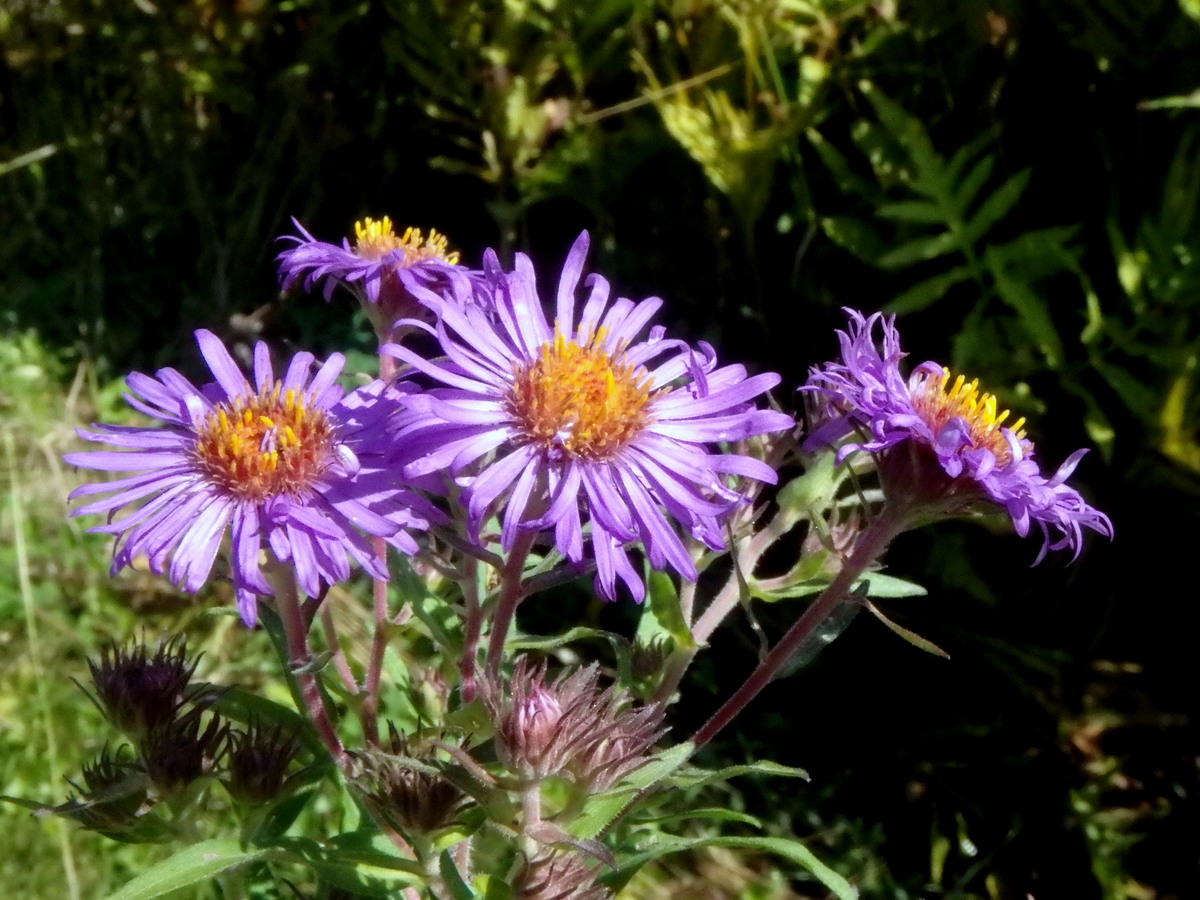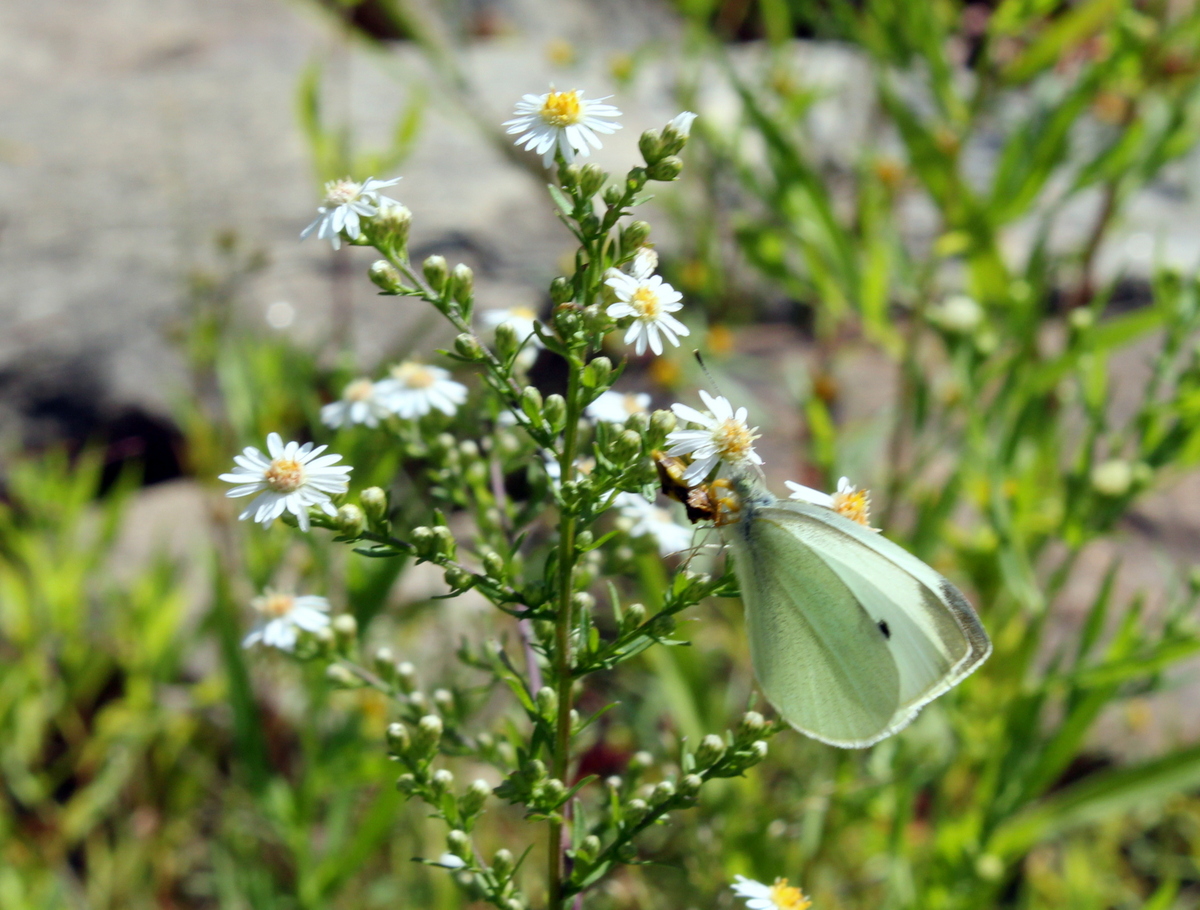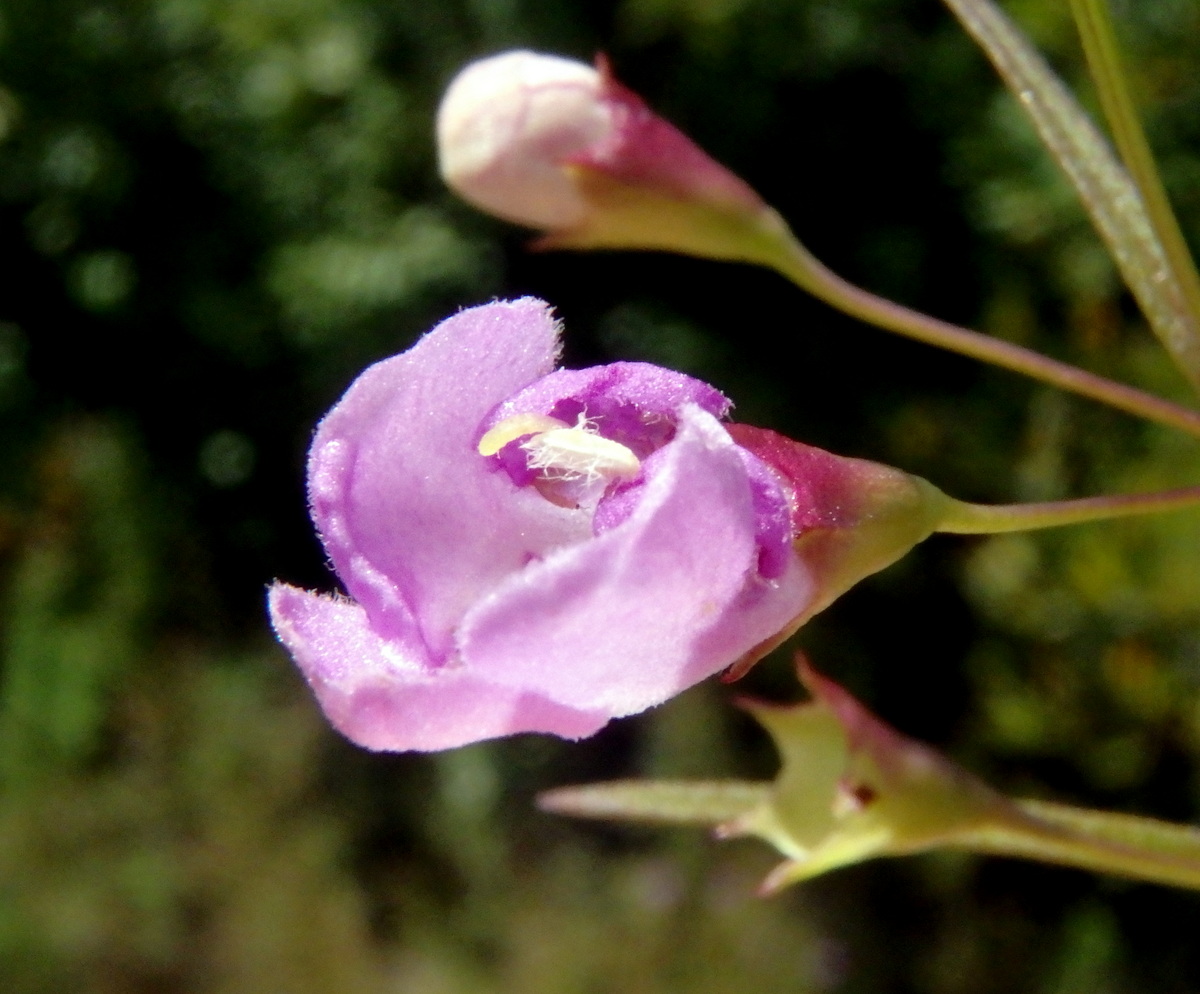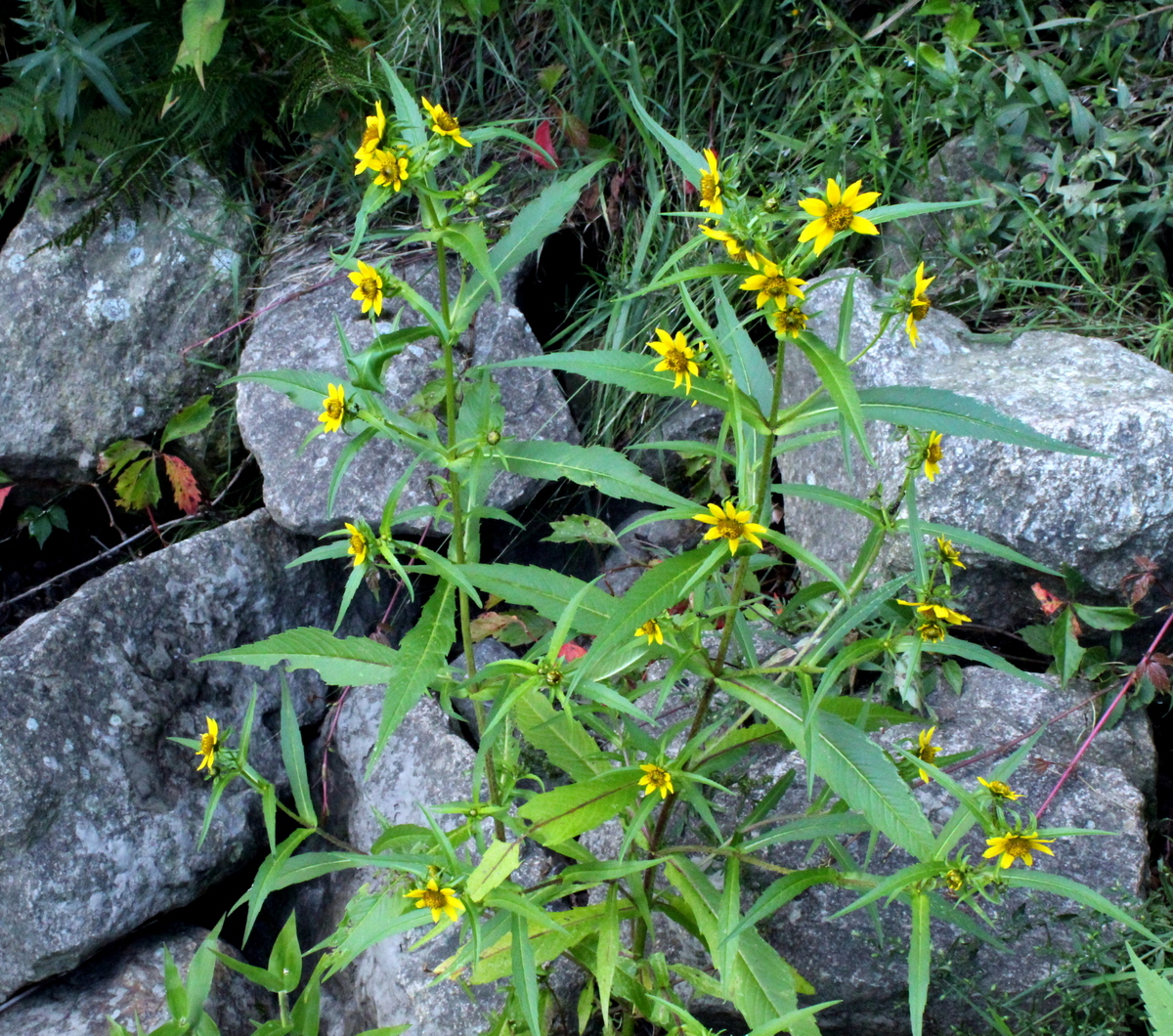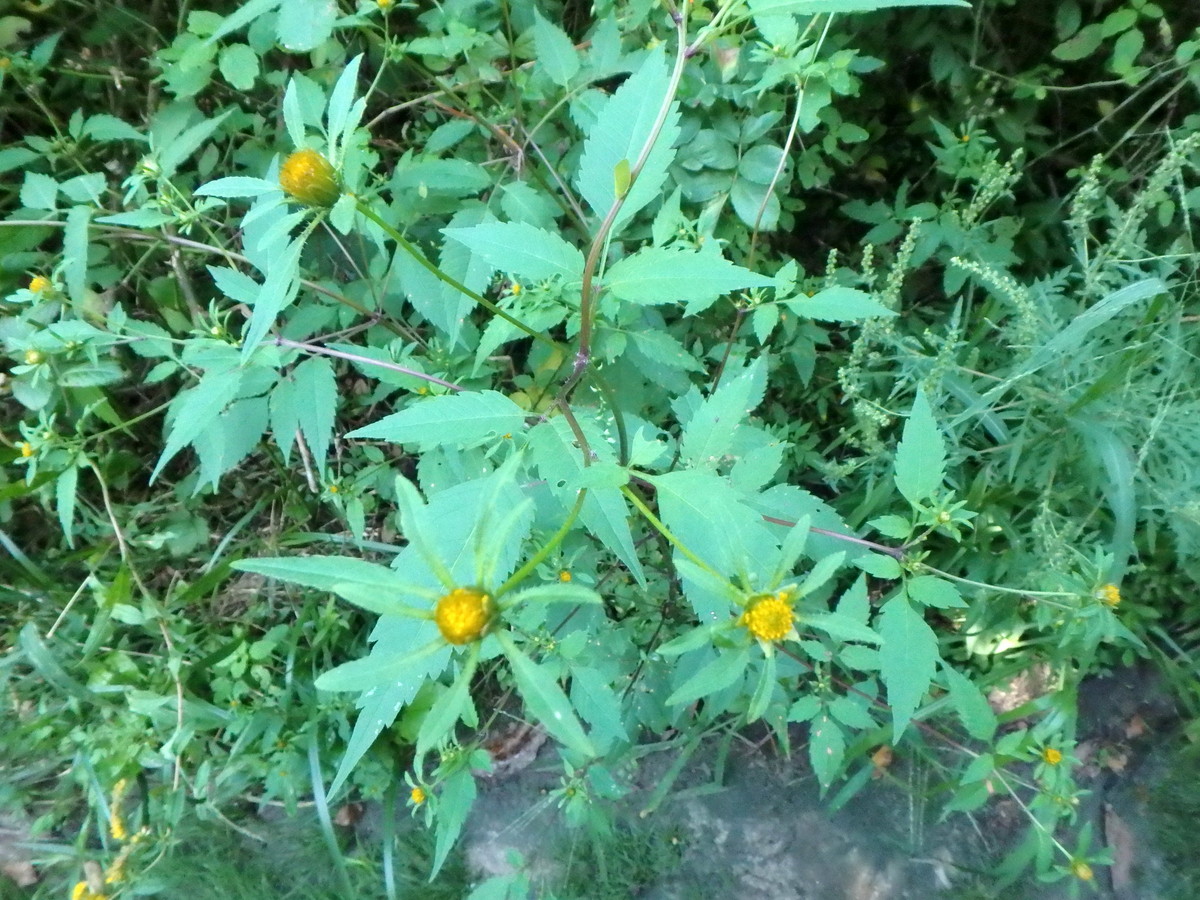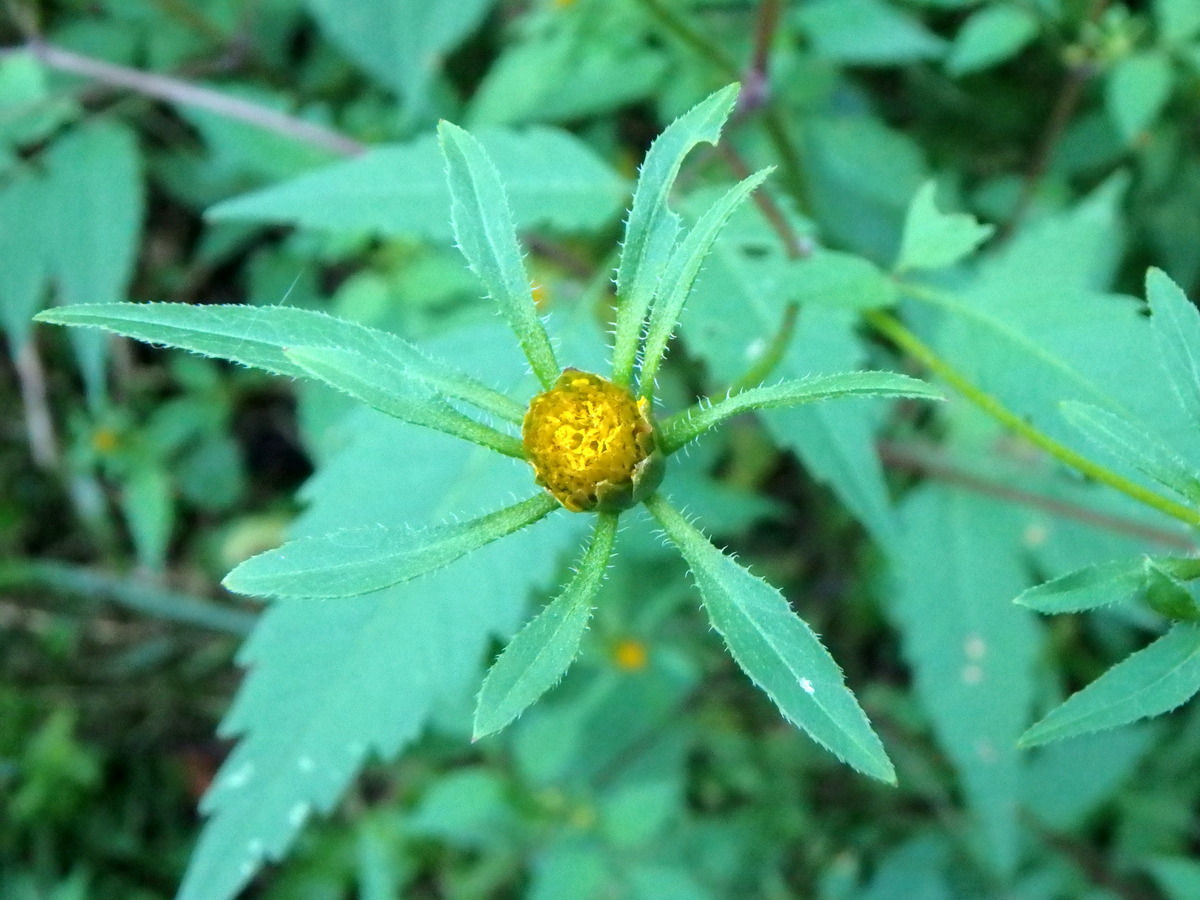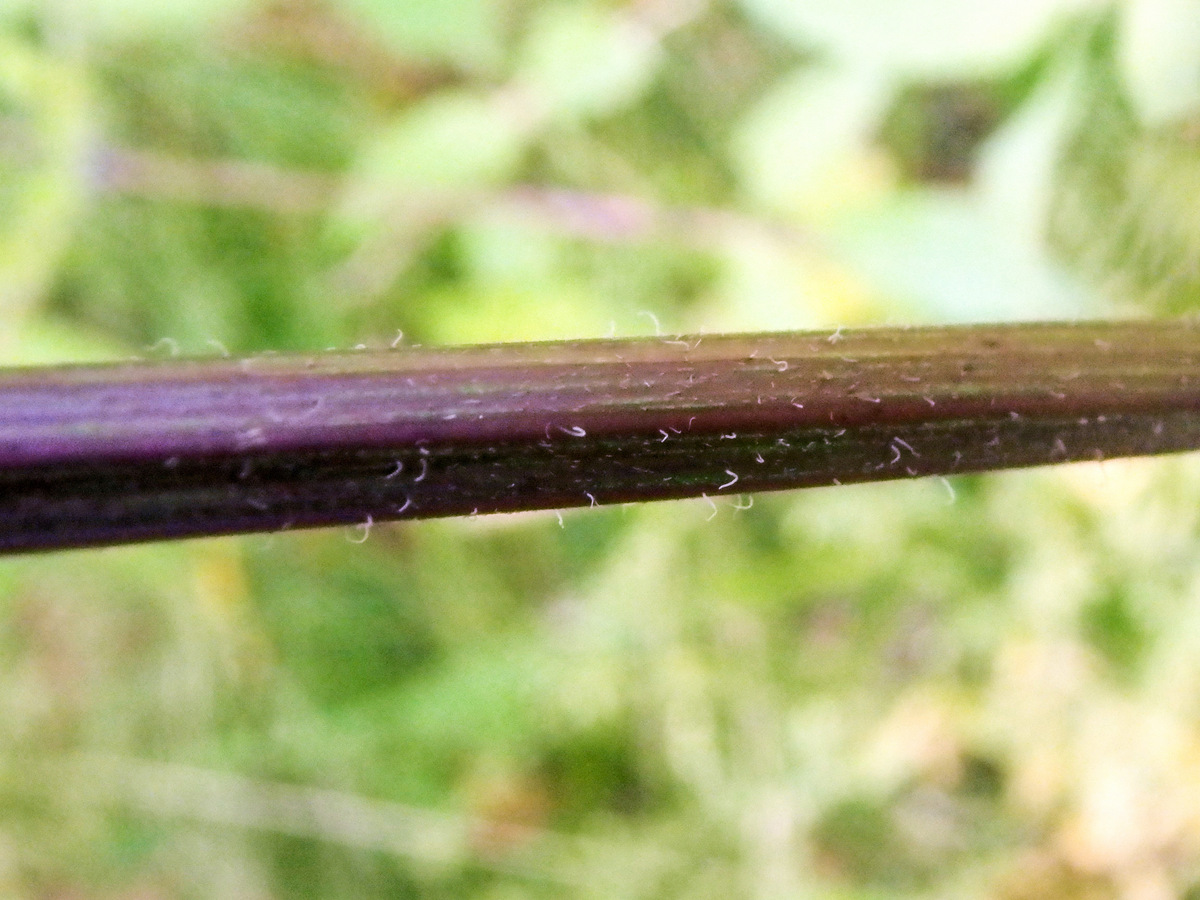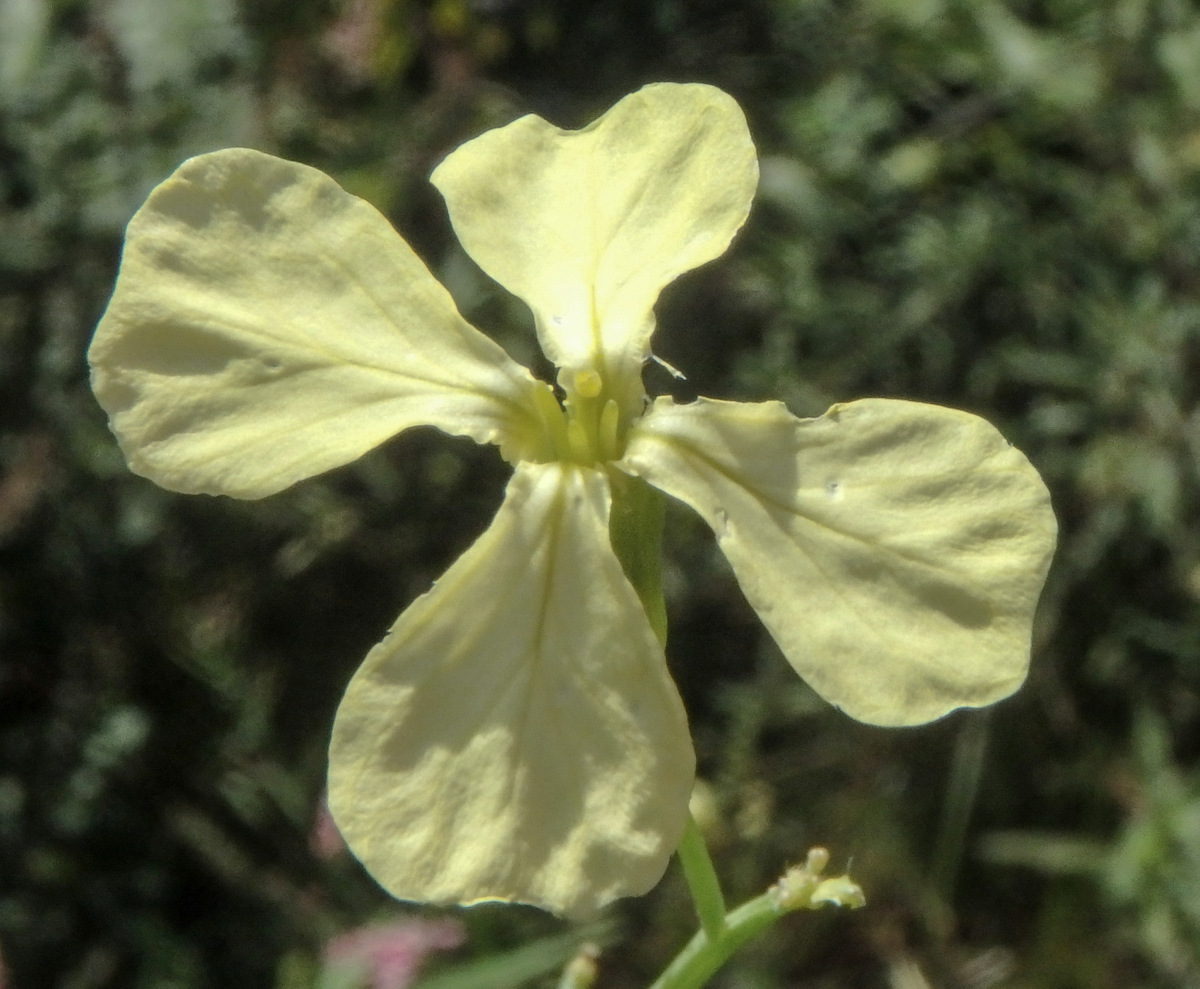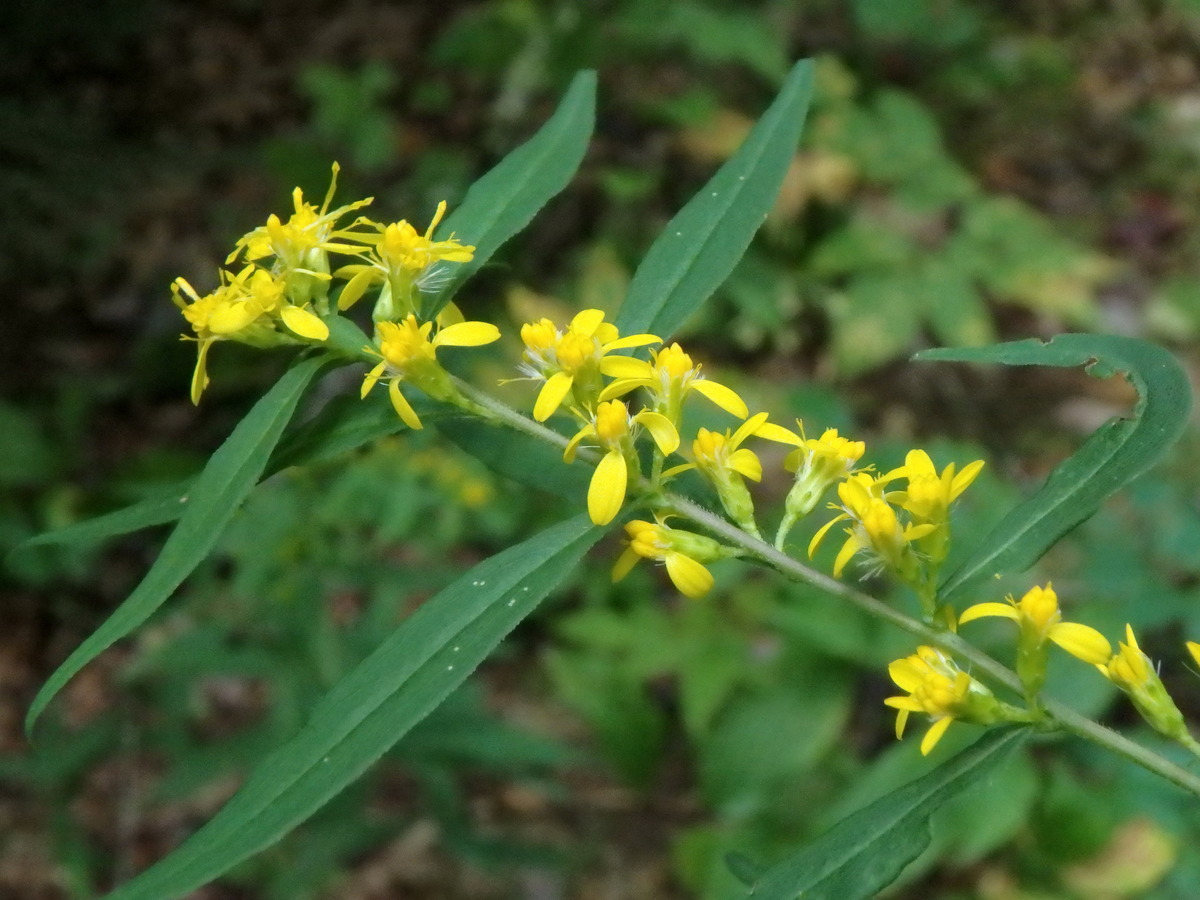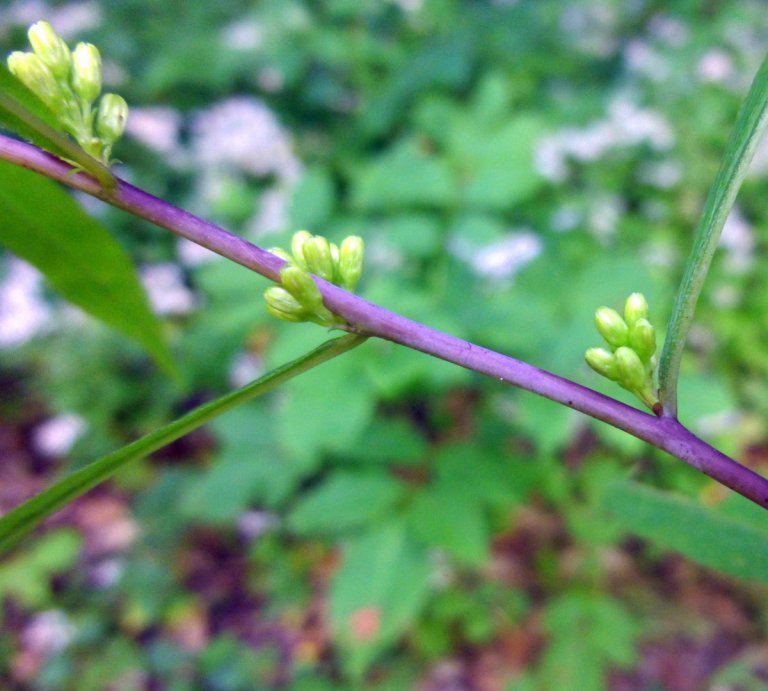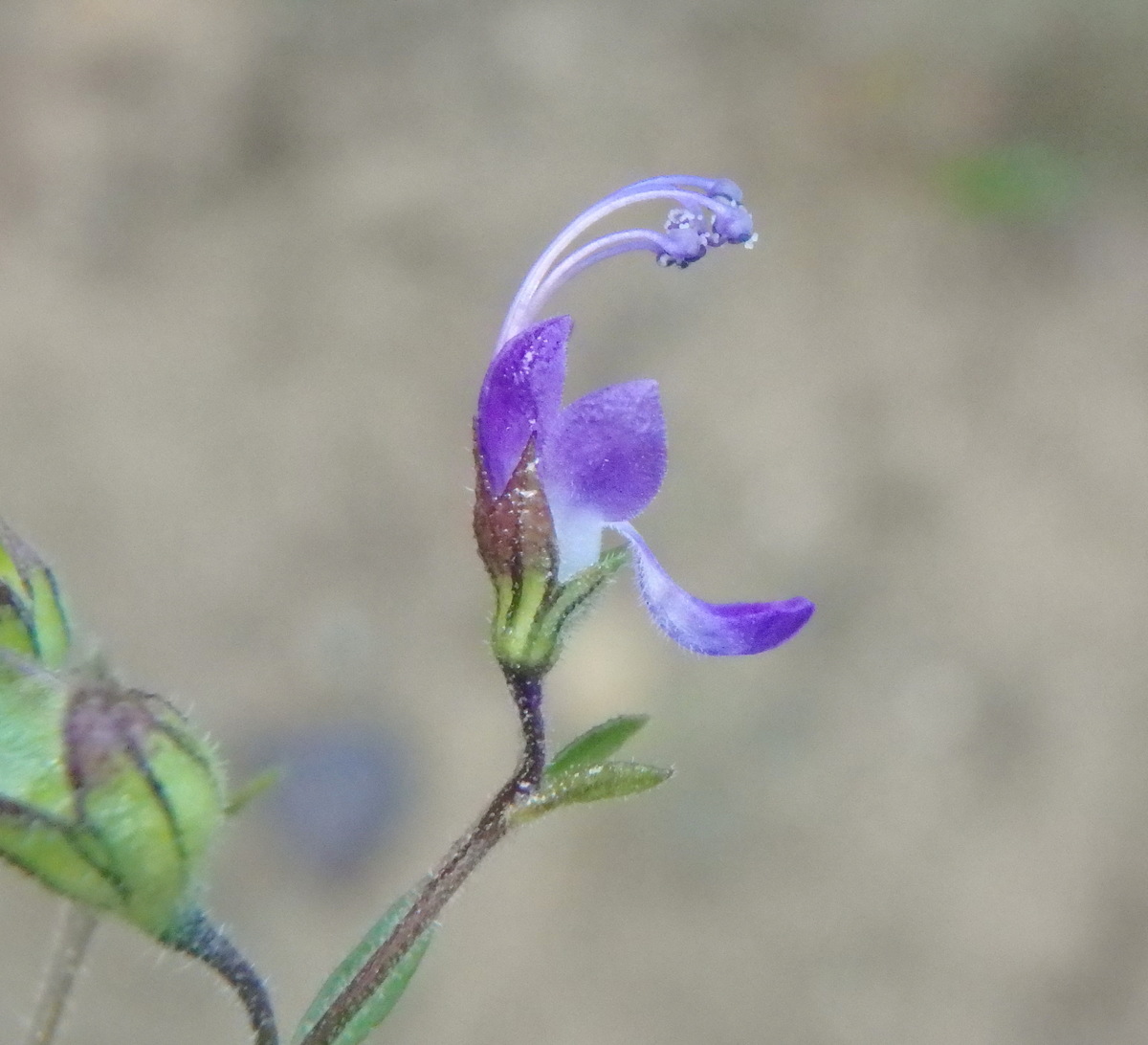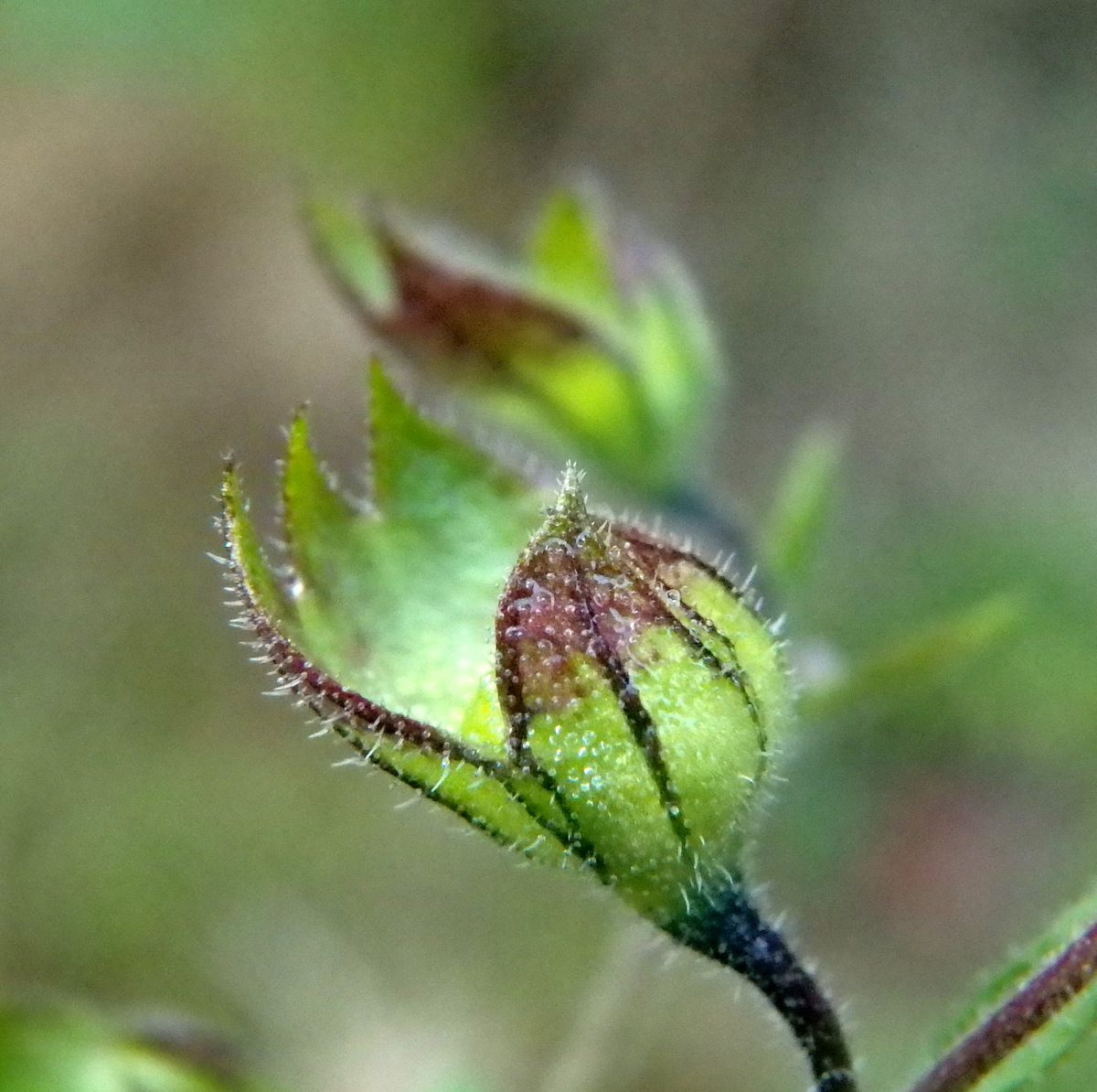
A bull thistle (Cirsium vulgare) showed me how a bee’s pollen baskets can be filled with white pollen when it is foraging purple flowers. I’ve never seen so much pollen on a thistle blossom before.

A bee on another blossom showed me how the harvesting is done. The things I’ve learned from nature!

This pretty dark purple sedum grew in a local garden.

A beautiful datura blossom (Datura stramonium) was almost spotless. These blossoms are big; probably three and a half inches across and nearly twice as long. The plant is also called Jimson weed. It is in the nightshade family and all parts of the plant are toxic to humans and livestock. There is a bicolor purple and white variety that is very beautiful. If you’ve got the space, it makes quite a statement.

Spiky Datura seedpods are bigger than a ping pong ball but smaller than a tennis ball, if that tells you anything. They are also called thorn apples. Taken in small enough doses Datura is hallucinogenic, as British soldiers found out when they included Jimsonweed leaves in salad in Jamestown, Virginia in 1676. They were high for 11 days and had to be penned up to prevent them from hurting themselves. When the symptoms wore off, they remembered nothing. You can read about the incident by clicking here.

Downy goldenrod (Solidago puberula) is an unusual member of the family, with its single vertical stalk of flowers. They reach about a foot and a half tall on a good day, but some books say they will reach 3 feet. The narrow, stalked flower heads (panicles) grow on plants that live at the edges of forests in dry sandy soil, often in colonies of 15-20 plants.

The bright yellow 1/4-inch flowers of downy goldenrod seem big when compared to other goldenrod flowers. Native Americans used goldenrod for treating colds and toothaches and it has been used for centuries in to treat kidney stones and urinary tract infections. In colonial times goldenrod growing naturally by the cottage door meant good fortune.

Silverrod (Solidago bicolor) likes the same dry, sandy conditions that downy goldenrod likes and they can often be found growing side by side. They also have the same single stalk growth habit. Silverrod is in the goldenrod family and is also called white goldenrod. It is the only white flowered goldenrod found in the northeast and is a native. Seeing these flowers always reminds me that the growing season is nearly over.

As silverrod’s flowers age they fade and change color slightly, and that’s where the bicolor part of the scientific name comes from.

Burdock (Arctium minus) is having a banner year. I’ve never seen so many flowers on these plants and they just keep blooming on and on. I’d say they must like lots of water. If I was ten again what wars I could have with the other neighborhood boys. We used to go home with them stuck all over us sometimes.

Because the sun was behind it, I had to overexpose this sunflower to get a half decent shot of it. Since its the only one I’ve seen this year it’ll have to do.

Another sunflower’s head was so heavy it had broken off and I was first drawn to it and then drawn into it. It is micro worlds like this that have helped me realize that I don’t need to know or to understand a single thing to see that everything is beautiful. Everything on this planet has a beauty of its own. We’re absolutely swimming in it.

I’ve never been that interested in begonias, though some are truly stunning. The frilly yellow centers on these flowers are what caught my eye. Some begonias make great house plants and some of them used to have a place in my indoor jungle. And it was a jungle; I used to half jokingly tell friends to bring a machete when they came over.

Mallow (Malvaceae) doesn’t seem to be having a good year. So far this is the only plant in flower that I’ve seen. It’s a very pretty flower that looks familiar to many people who have never seen it. Other well-known plants in this family include hibiscus, hollyhocks, and rose of Sharon, and I’d guess that’s why mallow looks so familiar.

I was surprised to find this pink spirea blooming in a local garden but it had been sheared, so maybe that’s why it was blooming so late. The bees were certainly happy to see it.

This year for the first time I’ve seen Johnny jump ups (Viola tricolor) blooming every single month, from March until now. I always thought they were strictly a cool weather plant but apparently not. Maybe lots of rain has more to do with it.

The fisherman you see in this shot saw me taking photos of these flowers and walked around me right into the frame, so hello world, here he is. Not too long after I took this shot, he caught an 8 or 9 inch pickerel in this pond and it proved to me that pickerel weed is indeed named after the pickerel fish, because the fish he caught was hiding in the pickerel weeds just like the legend says they do. That fish had some sharp looking teeth on it and the fisherman had quite a time getting his hook free, otherwise I would have shown you a photo of it. He told me that I had brought him luck.

I’ve watched catchfly (Silene armeria) go from a single plant to what is now a small colony of about 6 or 7 in 5 years or so, so it could hardly be called invasive, even though it is from Europe. It is also called sweet William catchfly and is said to be an old-fashioned garden plant in Europe. The name catchfly comes from the sticky sap it produces along its stem. It’s a very pretty little plant. I like its smooth, bluish green stem and leaves.

Purple loosestrife and goldenrod fought for a place in the sun. I know which will win; this will be a sea of nothing but purple in just a few years’ time.

New England asters (Symphyotrichum novae-angliae) have appeared so fall is definitely knocking on the door. These lighter colored ones always appear before the dark purple ones that I like so much. This one had what looks like a little hoverfly visiting.

And this one had a much bigger insect visiting. I think it might be a solitary wasp, possibly a potter wasp (Ancistrocerus antilope)?

I found this dark colored aster in a garden. It looked to be just waking up and unfurling its petals. Just as I was finishing this post I saw one of our native asters that was this color, so they’ll be coming along soon.
The hours when the mind is absorbed by beauty are the only hours when we really live, so that the longer we can stay among these things so much the more is snatched from inevitable Time. ~Loren Eiseley
Thanks for coming by.

























